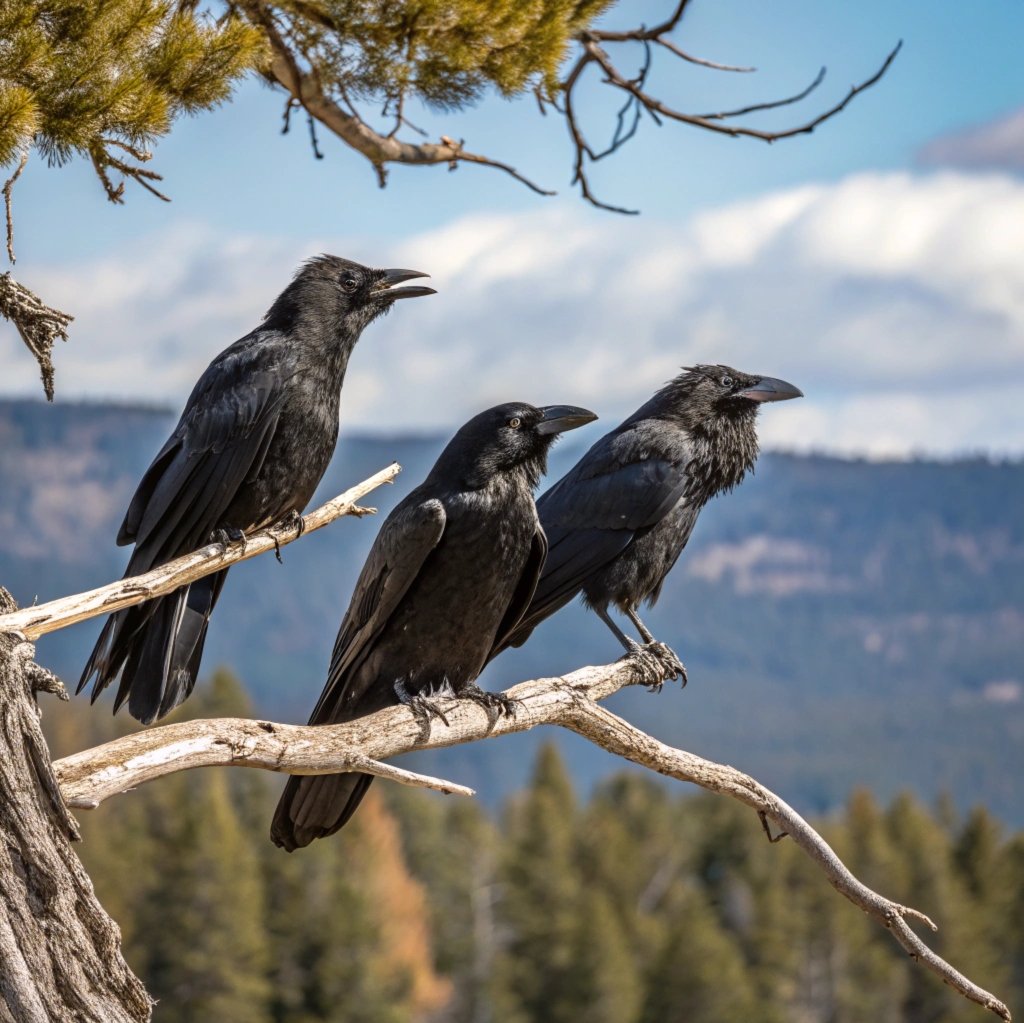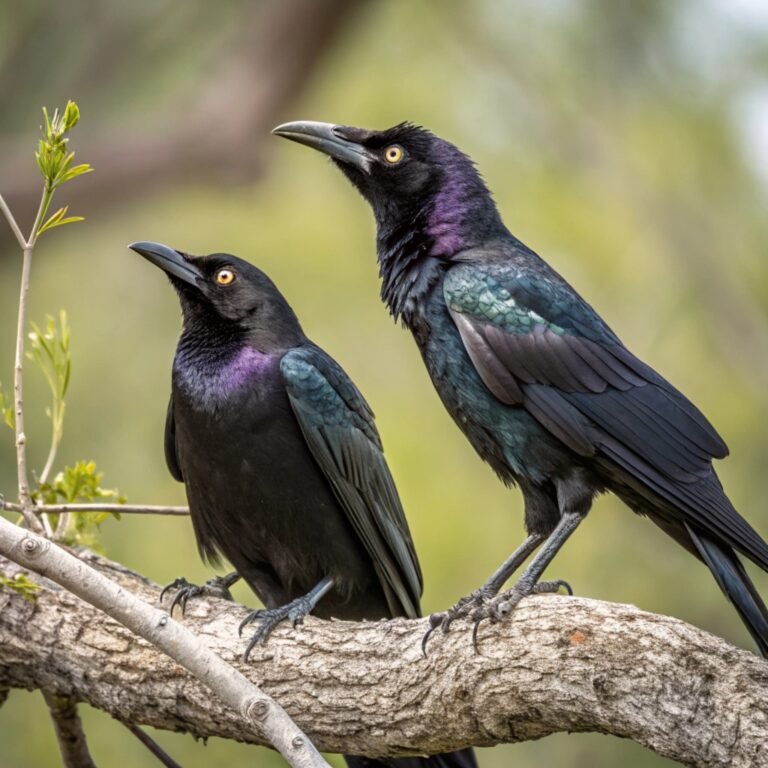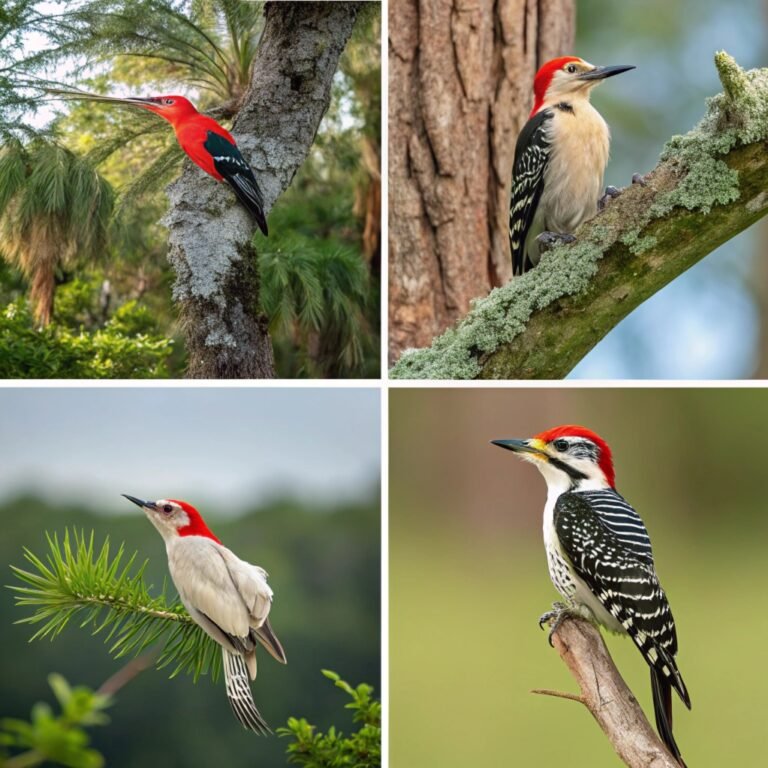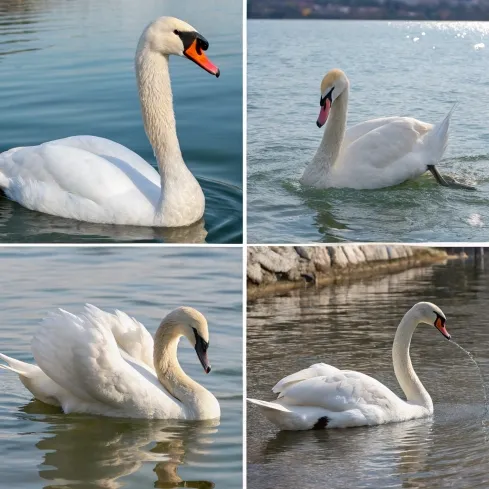A Comprehensive Guide to American Crow: This Intelligent and Fascinating Bird
The American Crow (Corvus brachyrhynchos) is a remarkable bird species that has captivated the attention of both researchers and bird enthusiasts alike.
Known for its intelligence, adaptability, and complex social behavior, this bird has successfully thrived in a wide range of habitats across North America.
From rural farmlands to bustling urban centers, the American Crow has demonstrated an impressive ability to adapt to various environments, making it one of the most widespread and recognizable bird species in the continent.
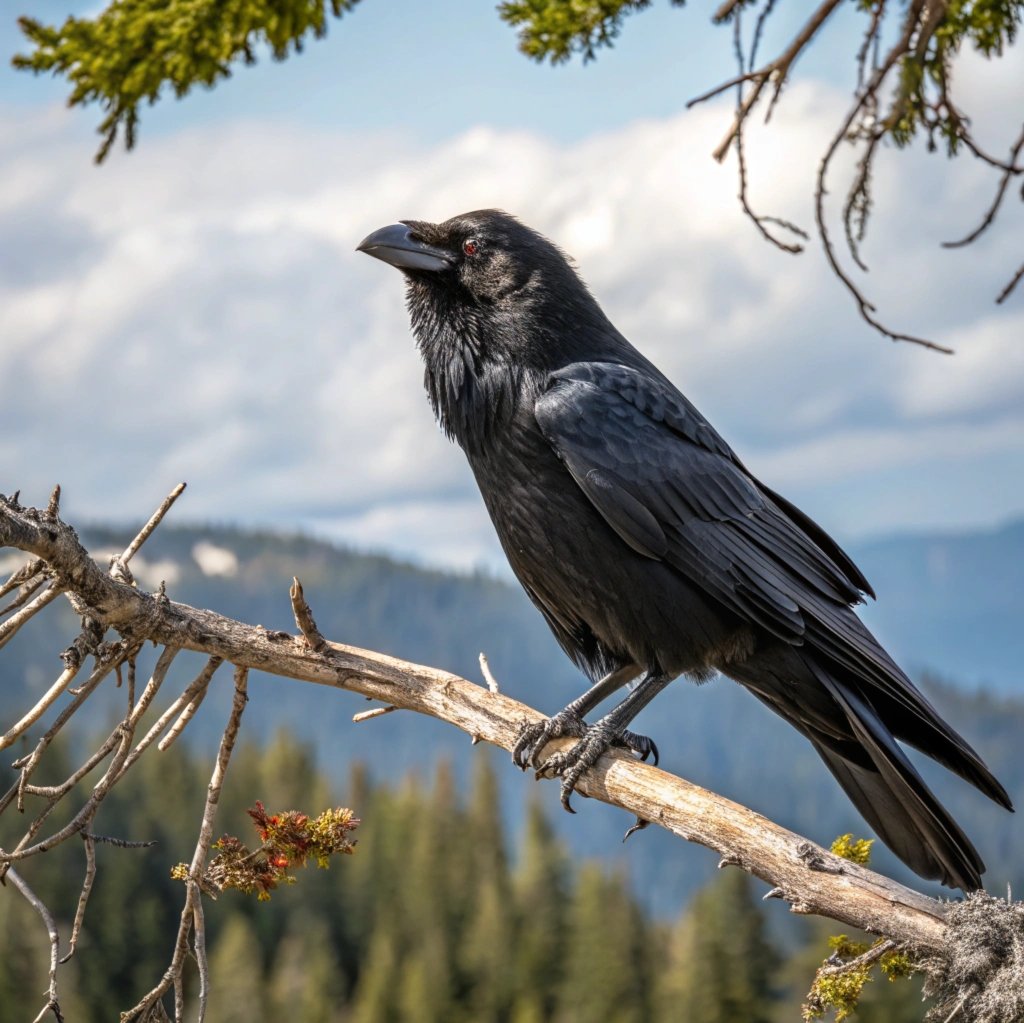
Key Takeaways:
- Intelligent and Adaptable: American Crows are known for their problem-solving abilities and adaptability to various environments.
- Omnivorous Diet: These birds have a diverse diet, consuming everything from insects and small animals to fruits, nuts, and human food scraps.
- Social Creatures: Crows form strong family bonds and engage in cooperative breeding, with offspring often helping to raise younger siblings.
- Habitat Versatility: They thrive in a wide range of habitats, including agricultural lands, urban areas, and forest edges.
- Tool Use: American Crows have been observed using and even making tools, showcasing their cognitive abilities.
- Vocal Communication: They have a complex system of vocalizations used for various purposes, including warning calls and social interactions.
- Long-lived: With proper care and favorable conditions, American Crows can live up to 20 years in the wild.
- Ecological Role: As both predators and scavengers, crows play important roles in ecosystem balance and nutrient cycling.
- Human Interactions: Crows have a long history of interaction with humans, often viewed as both pests and intelligent companions.
- Seasonal Behavior: Many northern populations engage in seasonal migrations, forming large winter roosts.
- Nest Building: Both male and female crows participate in building nests, often assisted by offspring from previous years.
- Facial Recognition: Studies have shown that crows can recognize and remember human faces, demonstrating their cognitive sophistication.
Physical Characteristics and Appearance
The American Crow is a striking bird with a distinctive appearance. These birds are characterized by their entirely black plumage, which has a glossy and slightly iridescent sheen.
Their feathers can sometimes appear to have a bluish or purplish tinge in certain lighting conditions.
Adult American Crows typically weigh around 450 grams, with males being slightly larger than females in about 20% of cases. They have strong legs and toes, well-adapted for walking and grasping.
Their bills are also black, relatively large, and slightly hooked at the end, perfect for their omnivorous diet.
A unique feature of crows is the presence of stiff bristles covering their nostrils. These bristles are believed to help protect their respiratory system while foraging.
The eyes of American Crows are a deep brown, almost black, giving them a keen and intelligent look.
Their wingspan can reach up to 39 inches, allowing for agile flight and impressive aerial maneuvers.
Habitat and Distribution
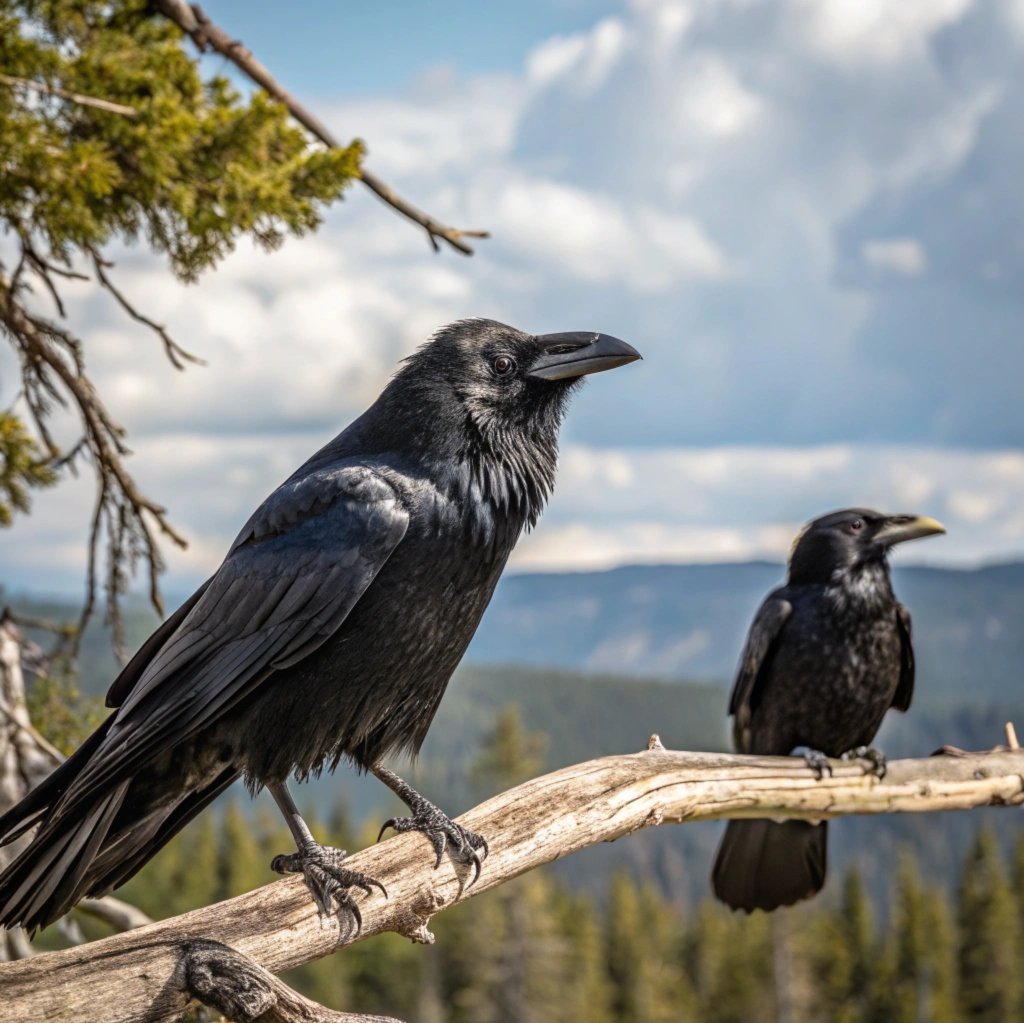
American Crows are highly adaptable birds that thrive in a variety of habitats. They show a strong preference for open areas with nearby trees, making agricultural lands and grasslands ideal foraging grounds.
These intelligent birds have also successfully adapted to human-altered landscapes, frequently inhabiting suburban neighborhoods, urban parks, and even coastal areas.
While they avoid dense, unbroken forests, American Crows can be found in forest edges, campgrounds, and along roads and rivers that cut through wooded areas.
Their distribution spans across North America, from the southern parts of Canada through the continental United States.
This wide range is a testament to their adaptability and success as a species.
American Crows are known to avoid extreme environments such as deserts, showcasing their preference for areas with moderate climate and ample resources.
Their ability to thrive in diverse habitats, from rural to urban settings, has contributed significantly to their widespread presence and ecological success across the continent.
Diet and Foraging Behavior
The American Crow is a true omnivore, displaying an impressive dietary versatility that contributes to its success across various habitats. These intelligent birds consume a vast array of foods, adapting their diet to seasonal availability and local resources.
Their menu includes grains, seeds, nuts, fruits, and berries, as well as a wide range of small animals. Crows are adept hunters, preying on insects, earthworms, mice, frogs, and even young turtles.
They are also known to be opportunistic scavengers, readily consuming carrion and human garbage. Interestingly, American Crows are significant nest predators, often feeding on the eggs and nestlings of other bird species.
Their foraging behavior is equally diverse. Crows typically forage on the ground, using their strong bills to probe and pick up food items.
They also demonstrate remarkable problem-solving skills, such as dropping hard-shelled nuts onto roads to crack them open.
This adaptability in both diet and foraging techniques allows American Crows to thrive in various environments, from rural areas to urban centers.
Social Structure and Behavior
The social structure of American Crows is complex and fascinating, setting them apart from many other bird species. These birds are highly social, often seen in groups rather than alone.
They form strong family bonds and engage in cooperative breeding, a behavior where offspring from previous years assist in raising new nestlings.
This family unit typically consists of the breeding pair and young from the past two years. Such cooperative behavior enhances the survival chances of new offspring and strengthens family ties.
American Crows are known for their intelligence and problem-solving abilities. They can work together to devise solutions, recognize unusual food sources, and even use tools.
Their social nature extends to communal roosting, where large groups, sometimes numbering in the hundreds of thousands, gather to sleep at night.
These roosts serve not only as protection from predators but also as information centers where crows can learn about new food sources from others.
Interestingly, crows exhibit behaviors like allopreening (grooming each other) and mobbing (collectively harassing predators), further highlighting their strong social bonds and cooperative instincts.
Breeding and Nesting Habits
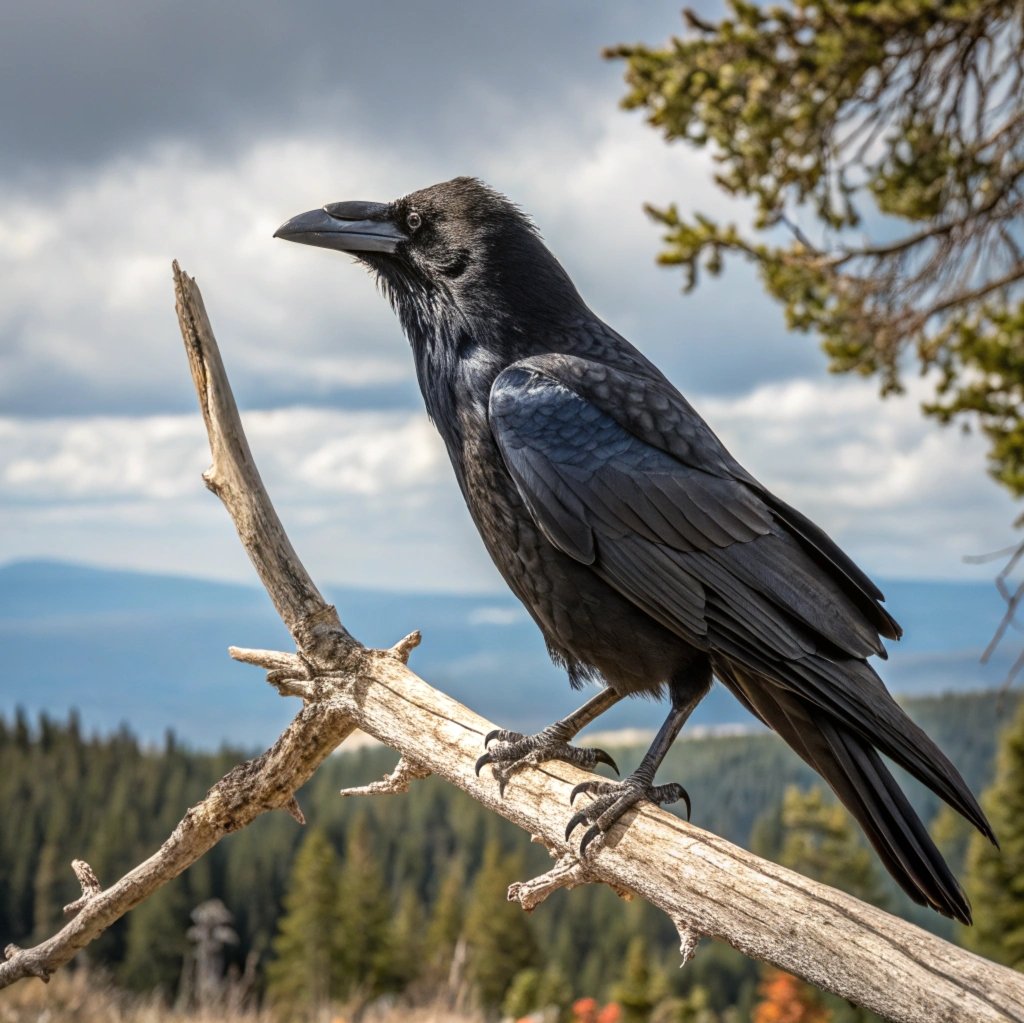
The breeding and nesting habits of American Crows showcase their strong family bonds and cooperative nature. These birds typically form long-term pair bonds, with couples often staying together year-round.
The breeding season usually begins in early spring, varying from February to May depending on the geographical location.
Nesting is a collaborative effort, with both male and female crows participating in the construction. Interestingly, young crows from previous years often assist in this process, demonstrating their cooperative breeding behavior.
The nest is typically built 18 to 60 feet above ground in trees such as oaks, pines, or cottonwoods.
It’s a sturdy structure made of twigs and sticks, lined with softer materials like shredded bark, feathers, grass, and even human-made items like cloth or string.
Female crows usually lay 3 to 6 eggs per clutch, which are incubated for about 18 days. During this time, the male brings food to the female.
After hatching, both parents and helper crows work together to feed and protect the young.
This cooperative approach to child-rearing contributes significantly to the success and survival of American Crow populations.
Intelligence and Problem-Solving Abilities
American Crows are renowned for their remarkable intelligence and problem-solving abilities, placing them among the most cognitively advanced birds. Their brain-to-body size ratio is comparable to that of great apes, indicating high cognitive potential.
Crows demonstrate tool use, a behavior once thought unique to primates. They’ve been observed fashioning tools from twigs or wire to retrieve food from hard-to-reach places.
Their problem-solving skills extend to complex tasks, such as understanding cause-and-effect relationships.
For instance, crows have been known to drop nuts onto busy roads, waiting for cars to crack them open, and then retrieving the exposed food during traffic stops.
They also exhibit impressive memory capabilities, recognizing human faces and remembering both positive and negative interactions for extended periods.
This ability allows them to adapt their behavior accordingly, avoiding potential threats and seeking out beneficial situations.
Crows can learn from each other, passing knowledge through generations, a form of cultural transmission rarely seen in non-human animals.
Their intelligence also manifests in their complex vocalizations, used for communication within their social groups and for warning of potential dangers.
Ecological Role and Importance
The American Crow plays a significant ecological role in its various habitats, contributing to the balance and health of ecosystems.
As omnivores and scavengers, crows help in nutrient cycling by consuming carrion and organic waste, effectively cleaning up the environment.
Their predatory habits assist in controlling populations of insects and small animals, which can be beneficial in agricultural settings by reducing crop pests.
However, their nest predation on smaller bird species can impact local bird populations, highlighting their complex role in ecosystem dynamics. Crows also act as seed dispersers when they consume fruits and nuts, aiding in plant reproduction and forest regeneration.
Their intelligence and adaptability make them excellent indicator species for environmental health, as changes in crow populations can signal broader ecological shifts.
In urban environments, crows have adapted to human presence, often serving as nature’s cleanup crew by consuming discarded food and waste.
Their presence in cities also provides urban dwellers with opportunities to observe and connect with wildlife.
Additionally, crows’ mobbing behavior against predators can indirectly protect other bird species.
Understanding the ecological importance of American Crows is crucial for balanced wildlife management and conservation efforts.
Interactions with Humans
The relationship between American Crows and humans is complex and multifaceted, shaped by centuries of coexistence. Crows have demonstrated remarkable adaptability to human-altered landscapes, thriving in urban and suburban environments.
This proximity has led to both positive and negative interactions. On one hand, crows are often viewed as pests due to their tendency to raid crops, scatter garbage, and create noise with their large roosting groups.
Their intelligence allows them to quickly learn and exploit human-provided food sources, sometimes leading to conflicts.
However, this same intelligence has also garnered admiration and fascination from many people.
Crows have been observed recognizing individual human faces, remembering those who have treated them well or poorly, and even passing this information to other crows.
This cognitive ability has led to interesting human-crow relationships, with some people actively befriending local crows.
In agricultural settings, crows can be beneficial by consuming insect pests, though their crop damage often overshadows this benefit in farmers’ perceptions.
Urban crows play a role in waste management by scavenging discarded food. Their adaptability and intelligence make them excellent subjects for scientific study, contributing to our understanding of avian cognition and behavior.
Vocalizations and Communication
American Crows are known for their diverse and complex vocalizations, which play a crucial role in their social interactions and survival.
Their most recognizable call is the familiar “caw,” but this is just one of many sounds in their vocal repertoire.
Crows use different calls for various purposes, including alarm calls to warn of predators, recruitment calls to attract other crows to food sources, and contact calls to communicate with family members.
The pitch, duration, and pattern of these calls can convey specific information about the type and urgency of the message.
Interestingly, crows can mimic sounds from their environment, including other bird species and even human words, though not as proficiently as some other corvids like ravens.
Their vocal learning ability allows for regional “dialects” to develop among crow populations. Beyond vocalizations, crows also communicate through body language.
Subtle movements of the head, wings, and tail can convey a range of emotions and intentions to other crows.
This sophisticated communication system underscores the social complexity of crow societies and their high level of intelligence.
Understanding crow vocalizations can provide valuable insights into their behavior, social structure, and responses to environmental changes.
Migration and Seasonal Behavior
The migratory patterns of American Crows vary significantly across their range, showcasing their adaptability to different climatic conditions.
Crows in the northern parts of their range, particularly those in Canada and the northern United States, exhibit more pronounced migratory behavior.
As winter approaches, these northern populations often move southward, generally wintering south of the Canada-US border.
This migration is primarily driven by the need to escape harsh winter conditions and find more abundant food sources.
However, not all American Crows migrate; many populations, especially those in milder climates, are year-round residents in their territories.
The timing and extent of crow migration can vary from year to year, influenced by factors such as food availability and weather patterns.
During migration, crows often form large flocks, which can number in the thousands.
These migratory flocks serve multiple purposes, including protection from predators and information sharing about food sources.
In winter, both migratory and resident crows often form large communal roosts, sometimes containing tens of thousands of birds.
These winter roosts are typically located in areas that offer protection from wind and predators, and are near reliable food sources.
Threats and Conservation Status
While the American Crow is currently classified as a species of Least Concern by the International Union for Conservation of Nature (IUCN), these birds face several threats in their environment.
One significant challenge is habitat loss due to urbanization and agricultural intensification, which can reduce suitable nesting and foraging areas.
Pesticide use in agriculture poses another threat, as crows can accumulate toxins from consuming contaminated insects or crops.
The West Nile virus has had a notable impact on crow populations since its introduction to North America in 1999, causing significant mortality in some regions.
Climate change is an emerging concern, potentially altering food availability and breeding patterns.
Human persecution remains a factor in some areas, where crows are viewed as pests and subject to control measures.
Despite these challenges, American Crows have shown remarkable resilience and adaptability.
Their intelligence and ability to thrive in human-modified landscapes have helped maintain stable populations overall.
Conservation efforts for American Crows often focus on habitat preservation, particularly in urban and suburban areas where green spaces provide crucial resources.
Monitoring programs track population trends and health, helping to identify and address emerging threats.
Public education about the ecological role and cognitive abilities of crows can also promote more positive attitudes towards these birds, potentially reducing human-wildlife conflicts.
Fascinating Facts and Cultural Significance
American Crows have long captured human imagination, featuring prominently in various cultural narratives and scientific studies.
These birds are known for their remarkable memory, with studies showing they can remember human faces for years, distinguishing between those who have helped or harmed them.
This ability extends to their social lives, where they can remember and hold “grudges” against specific predators.
Crows demonstrate tool use, a behavior once thought unique to primates. They’ve been observed crafting hooks from wire to retrieve food, showcasing their problem-solving skills.
In many Native American cultures, crows hold significant symbolic value, often associated with wisdom, intelligence, and as messengers between the physical and spiritual worlds.
Their intelligence has been the subject of numerous scientific studies, revealing abilities like analogical reasoning and self-awareness.
Crows engage in play behavior, seen sliding down snowy roofs or playing with objects, indicating a level of cognitive sophistication.
They’ve been observed holding “funerals” for their dead, gathering around fallen comrades in what appears to be mourning behavior.
This complex array of behaviors and their cultural significance make American Crows a subject of ongoing fascination for both scientists and the general public.
FAQs
How long do American Crows live?
American Crows typically live between 7 to 8 years in the wild. However, with favorable conditions and absence of predators or diseases, they can live up to 20 years. In captivity, they have been known to live even longer, with some individuals reaching 30 years of age.
Can American Crows talk like parrots?
While American Crows are intelligent and can mimic some sounds, they don’t have the same vocal abilities as parrots. They can imitate some words or phrases, but their “speech” is usually not as clear or extensive as that of parrots. Their natural vocalizations are more diverse and complex than their ability to mimic human speech.
Are American Crows considered pests?
The perception of American Crows as pests varies. In agricultural settings, they can damage crops and are often viewed as nuisances. However, they also provide benefits by consuming insect pests.

Hello, I’m Emily Price, the founder of Birds Affection. As a passionate bird enthusiast and spiritual seeker, I’ve always been fascinated by the symbolic meanings and mystical connections between birds and our lives. On this website, I share my knowledge and insights on the spiritual significance of various bird species, exploring their roles as messengers, guides, and teachers. Through my writing, I aim to inspire and educate others on the profound wisdom and beauty that birds bring to our world. Join me on this journey as we delve into the enchanting realm of bird symbolism and discover the hidden meanings behind these magnificent creatures.

